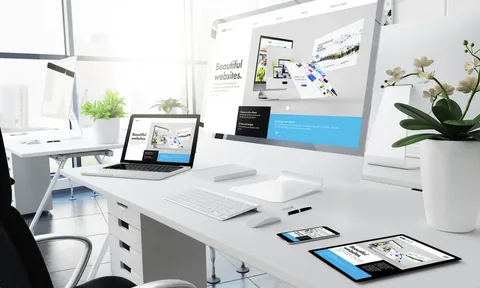Typography plays a crucial role in the design of any website. While it might seem like a small detail, the font choices you make, how text is spaced, and how it’s styled can profoundly impact your site’s overall feel and user experience. In this article, we’ll explore how typography shapes the feel of your web design and why it’s so important for both aesthetics and functionality.
The Impact of Typography on User Experience
When designing a website, it’s easy to focus solely on images, color schemes, and layout. However, typography has an equally significant role to play in creating a seamless user experience. Well-chosen fonts can make text easier to read, which means your visitors are more likely to stay engaged with your content. Poor typography, on the other hand, can frustrate users and drive them away.
The right typography ensures that your message is clear, your website is easy to navigate, and visitors feel comfortable interacting with your content. It’s not just about picking a pretty font—it’s about crafting a visual language that complements your brand and enhances your website’s usability.
Setting the Tone with Font Choice
One of the most immediate ways typography shapes the feel of your website is through the fonts you choose. Different fonts evoke different emotions. For example:
- Serif Fonts: These fonts have small lines at the end of each letter. They’re often seen as traditional, formal, and trustworthy. Using a serif font might be ideal for a website that needs to convey professionalism, such as law firms, financial services, or academic institutions.
- Sans-Serif Fonts: Clean and modern, sans-serif fonts are often associated with simplicity and clarity. They’re great for websites that want a more contemporary feel—think tech companies, blogs, or creative portfolios.
- Script and Decorative Fonts: These fonts add a personal or artistic touch, making them ideal for websites that want to stand out or convey creativity, like fashion brands or online shops for unique products.
By choosing the right font, you set the tone for your site and influence how visitors perceive your brand. Whether you’re aiming for a sleek, professional appearance or a friendly, approachable vibe, your font selection speaks volumes.
How Typography Influences Readability
Typography isn’t just about style—it also directly affects readability. The right font size, line height, and spacing can make or break your site’s legibility. When users struggle to read text, they’re more likely to leave your site in frustration.
- Font Size: Text that is too small can be hard to read, while text that is too large can overwhelm the reader. A good rule of thumb is to use 16px for body text, with slightly larger sizes for headings.
- Line Height and Spacing: Adequate line spacing ensures that text doesn’t appear cramped and is easy to scan. Proper spacing between paragraphs and headings also makes it easier for users to digest content.
- Contrast: Ensure there’s sufficient contrast between the text and background so that the words are easy to see. This is particularly important for accessibility, as people with visual impairments may struggle with low-contrast combinations.
Typography and Brand Identity
Your choice of typography does more than influence readability—it’s also a key element of your brand identity. Just as you carefully select your brand’s logo, color scheme, and imagery, your font choices should align with your company’s values and personality.
For example, a high-end jewelry brand may opt for elegant serif fonts with fine details to evoke luxury, while a tech startup might choose modern, minimalist sans-serif fonts to convey innovation and simplicity. Consistency in typography across all your marketing materials—website, social media, brochures—reinforces brand recognition and trust.
The Role of Hierarchy in Typography
Typography also helps you create a visual hierarchy on your website, guiding users through your content in a way that feels natural. Different font sizes, weights, and styles can signal the importance of certain elements, making it clear where to start reading, what to pay attention to, and what can be skimmed.
- Headings and Subheadings: These help break up content into digestible chunks and draw attention to key points. Larger, bolder fonts are typically used for headings to make them stand out.
- Body Text: This is where readability becomes crucial. It should be clear, uniform, and easy to read, so users don’t strain their eyes while navigating your content.
- Call-to-Action Buttons: Typography can also make your buttons more engaging. Clear, bold text on buttons encourages clicks, guiding users toward desired actions, such as subscribing, buying, or learning more.
Conclusion: The Power of Typography in Website Design
To sum it up, typography is not just a decorative element of your website—it shapes the overall feel of your site, influences user behavior, and communicates your brand identity. By choosing the right fonts, ensuring readability, and establishing a clear hierarchy, you can elevate the user experience and create a website that truly reflects your brand’s essence.

